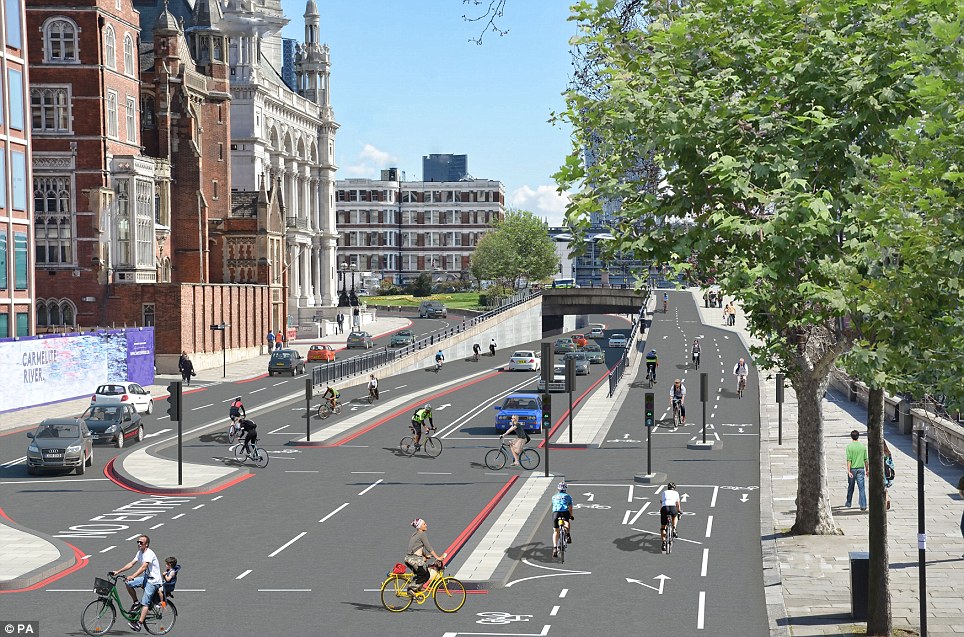PlacesForBikes is a PeopleForBikes program to help U.S. communities build better biking, faster. You can follow them on LinkedIn, Twitter or Facebook or sign up for their weekly news digest about building all-ages biking networks.
Leave it to a Brit to deliver a mathematical smackdown this courteously.
History may never record which anonymous bureaucrat was assigned to field the following question about London's protected bike lane network (known there as "cycle superhighways") submitted to the public agency Transport for London:
Prior to the introduction of cycle superhighway, certain claims were made by TfL on the impact on traffic on Upper Thames St. Congestion now seems to be worse than predicted. Please supply any data or reports on the prediction v. reality. If no analysis has been done, please let me know if it will be and if not, why not. Thank you.
The bureaucrat found while looking up the data for this question that some auto speeds (especially the eastbound evening rush hour) were indeed slower than first modeled, while others (the westbound morning rush hour -- so, in most cases the same commuters) came out faster than first modeled:

That's when the Transport for London bureaucrat also dropped this mind bomb into the conversation:
Recent monitoring data shows that central London segregated cycle lanes are moving five times more people per square metre than the main carriageway, with East West Cycle Superhighway seeing a more than 50 per cent increase the total mileage cycled.
Because the person who asked the question, after all, didn't ask about auto congestion. They asked about traffic congestion.
And the happy news from this project seems to be that because "traffic" means people, not cars, London's new protected bike lane network has made Upper Thames Street much, much more efficient -- because it gave more Londoners a way to comfortably move through their city in a way that requires less public space.
Via Last Not Lost.






